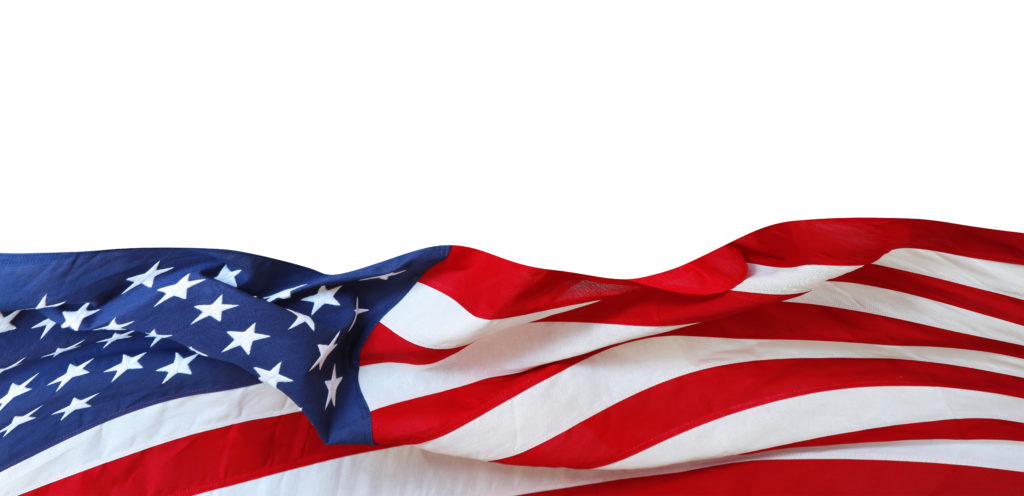Medical Devices Premarket Requirements
Premarket Requirement
Premarket Requirements for Imported Medical Devices
All medical devices imported into the U.S. must meet the regulatory requirements of both the U.S. Customs and Border Protection (CBP) and the U.S. Food and Drug Administration (FDA). All products regulated by the FDA must meet the same requirements, whether imported from abroad or produced domestically.
A medical device is defined as:
- an instrument, apparatus, implement, machine, contrivance, implant, in vitro reagent, or other similar or related article, including a component part or accessory which is:
- Recognized in the official National Formulary, or the United States Pharmacopoeia, or any supplement to them,
- Intended for use in the diagnosis of a disease or other conditions, or in the cure, mitigation, treatment, or prevention of disease, in man or other animals, or
- Intended to affect the structure or any function of the body of man or other animals, and which does not achieve its primary intended purposes through chemical action within or on the body of man or other animals and which is not dependent upon being metabolized for the achievement of any of its primary intended purposes.”
In-Depth Coverage: Importing Medical Device
If your product is labeled or used in a manner that meets this definition it will be regulated as a medical device and is subject to the FDA’s laws and regulations before, during, and after it is offered for sale or use in the United States.
Medical devices range from simple tongue depressors and bedpans to complex programmable pacemakers with micro-chip technology and laser surgical devices. Medical devices also include in vitro diagnostic products, such as general purpose lab equipment, reagents, and test kits.
Certain electronic radiation emitting products with medical application and claims meet the definition of medical device. Examples include diagnostic ultrasound products, x-ray machines and medical lasers. FDA’s Center for Medical Devices and Radiological Health regulates a range of products from microwaves to DVD drives. If your device is also a radiation-emitting electronic product there may be additional requirements.
Type of Medical Devices and Premarket Submission
Some medical devices require premarket submissions depending on use and classification. FDA has established classifications for approximately 1,700 different generic types of devices and grouped them into 16 medical specialties referred to as panels. Each of these generic types of devices fall into one of three medical device classifications: Class I, Class II, and Class III. Class I includes devices with the lowest risk and Class III includes those with the greatest risk. In some circumstances devices are unclassified.
For further information review the Medical Device Classification Product Codes Guidance for Industry and FDA Staff.
Device Classification Database includes a list of all medical devices with their associated classifications, product codes, FDA Premarket Review organizations, and other regulatory information.
Intended Use and Risk of the Device
Device classification depends on the intended use of the device and also upon indications for use. For example, a scalpel's intended use is to cut tissue. A subset of intended use arises when a more specialized indication is added in the device's labeling such as, “for making incisions in the cornea”. Indications for use can be found in the device's labeling, but may also be conveyed orally during the sale of the product. In addition, classification is risk-based, that is, the risk the device poses to the patient and/or the user is a major factor in the class it is assigned.
General Controls
General controls are the one type of regulatory controls that apply to all classes of medical devices, that is, Class I, II, and III.
- Labeling: provides information about the device to ensure its safe and effective use.
- Medical Device Reporting: report device-related injuries and deaths
- Establishment registration: register business with FDA
- Quality System: ensure safe, effective finished devices
- Device listing: identify devices
- Adulteration: provide device not proper for use
- Misbranding: provide false or misleading labeling
Special Controls
Certain medical devices may need to comply with Premarket Submission requirements (Premarket Notification or Premarket Approval). The class to which your device is assigned determines the type of premarketing submission/application required for FDA clearance to market. If your device is classified as Class I or II, and if it is not exempt, a 510k will be required for marketing.
For Class III devices, a premarket approval application (PMA) will be required unless your device is a preamendments device (on the market prior to the passage of the medical device amendments in 1976, or substantially equivalent to such a device) and PMA's have not been called for. In that case, a 510k will be the route to market.
If your device is a type that requires a premarket notification (or 510(k)) submission, you are required to submit a 510(k) when the following occurs: (a) a foreign manufacturer intends to export a medical device to the U.S. that the firm has never before shipped to the U.S.; (b) either the foreign manufacturer or initial distributor changes the intended uses of devices that are legally being marketed in the U.S.; or (c) changes or modifications to a legally marketed device that could significantly affect its safety or effectiveness.
Premarket Submissions
If you have classified your products you should select and prepare the appropriate premarket submission, if one is required for your specific product’s classification. For most medical devices, the appropriate submission type is identified within the product classification, which may be obtained from the public Product Classification database. Five of the most common types of submissions are:
Investigational device exemption (IDE). This is the one submission where you are not asking to get your product to market. Instead, this is the submission where you are asking for FDA approval to conduct clinical research on your investigational device. In an IDE, you're collecting clinical safety and effectiveness evidence, as part of your overall valid scientific evidence, that you plan to include in a future marketing application. Clinical studies will typically require FDA approval as well as approval by an Institutional Review Board, with the goal of protecting the safety of patients as much as possible during the research being proposed.
Premarket Notification (510(k))
510(k) is the most prolific premarket submission type with several thousands of 510(k)s submitted to the FDA each year. This is a marketing application mostly for low and moderate risk devices – these are the ones that are Class I or II. The 510(k) is a comparison-type of submission, in which the FDA determines whether a new device is substantially equivalent to a predicate device, which is a legally marketed Class I or II device. In this comparison, the FDA examines three main aspects: the intended use, device characteristics or features, and, if necessary, the results of performance testing.
Premarket Approval (PMA)
PMA is a marketing application for high-risk devices – these are ones that are Class III, as well as devices without an existing classification. In a PMA, a device must demonstrate a reasonable assurance of safety and effectiveness. In contrast to the 510(k), PMA evidence must stand on its own. It is not an equivalence evaluation to another legally marketed device. The next two submission types are alternatives to the 510(k) and PMA to get a new product to market. They have specific conditions where they apply, so let's review them
De Novo
This submission type is intended for devices for which there is no existing classification regulation. As a result, a De Novo is usually for devices that the Agency hasn't previously evaluated. These are usually new, novel device types. The De Novo submission process will allow a new product to get to market by creating a new classification regulation for that device type in Class I or II. A De Novo may be considered an alternative to the PMA. The benefit of the De Novo is to regulate the new device type with a reduced regulatory burden than that of a PMA.
Humanitarian Device Exemption (HDE)
This is the premarket submission type for humanitarian use devices, that is, devices that are intended to treat or diagnose patients of a disease or condition that affects or is manifested in not more than 8,000 individuals per year in the United States. Unlike PMAs, HDE devices are exempt from demonstrating effectiveness. Instead, an HDE must show reasonable assurance of safety and probable benefit.
How does FDA verify premarket submissions?
When a product requires premarket submission, the FDA will verify the declared 510(k) or PMA by comparing the submitted information to CDRH’s data systems. If the 510(k) or PMA information and number is not supplied or is incomplete or inaccurate, it may delay the review of your entry. If the information submitted matches the CDRH data system, then compliance is verified; if the information does not match, the FDA may gather additional information or may detain the product. If the product requires a PMA or 510(k) and does not have one, it will be subject to refusal.
How do I obtain information on premarket submissions for specific products?
The FDA maintains public 510(k) and PMA databases. You can search the releasable 510(k) and PMA databases to obtain 510(k) and PMA information for a specific product.
The class to which your device is assigned determines, among other things, the type of premarketing submission/application required for FDA clearance to market. If your device is classified as Class I or II, and if it is not exempt, a 510k will be required for marketing.
For Class III devices, a premarket approval application (PMA) will be required unless your device is a preamendments device (on the market prior to the passage of the medical device amendments in 1976, or substantially equivalent to such a device) and PMA's have not been called for. In that case, a 510k will be the route to the market.
In-Depth Coverage: Country of Origin
- Country of Origin of Imported Merchandise
- Customs Ruling: Country of Origin
- Country of Origin: Food Products
- Country of Origin: Chemical and Pharmaceutical Products
- Country of Origin & Country of Manufacture: CBP vs. FDA
- Country of Origin: Substantial Transformation or Country of Assembly Test
- Country of Origin and Free Trade Agreement
- Country of Origin and Section 301
In-Depth Coverage: USDA-Regulated Products
- Importing USDA-Regulated Food Products
- Import Regulation by USDA Agricultural Marketing Service (AMS)
- Food Products – FDA or USDA Regulated
- Country of Origin Labeling
- Importing Animals, Animal Products, and Biologics into the US
- Importing Meat, Poultry, and Egg Products into the US
- Labeling and Marking of Imported Meat, Poultry, and Egg Products
- USDA National Organic Program (NOP)
- Agricultural Safeguards and USDA Licensing
In-Depth Coverage: Customs Valuation
In-Depth Coverage: Trade Remedies
In-Depth Coverage: Marketing and Advertising Compliance
- Federal Trade Commission (FTC) Advertising Rules
- Made in USA Standard
- FTC Regulation on Environmental Claims
- Adverting and Marketing on the Internet
- Label Claims for Conventional Foods and Dietary Supplements
- Dietary Supplement Advertising: What is FTC's Truth-in-Advertising Law?
- USDA Country of Origin Labeling (COOL)
- FTC Rules & Regulations on Food Advertisement
FDA-Regulated Products and Import Requirements
- What is Food Safety Modernization Act (FSMA)?
- Prior Notice of Imported Foods
- Food Facility Registration
- Risk-Based Preventive Controls for Human Food
- Risk-Based Preventive Control for Animal Food
- Standards for the Growing, Harvesting, Packing, and Holding of Produce for Human Consumption
- What is Foreign Supplier Verification Program (FSVP)?
- Protect Food against Intentional Adulteration
- FDA Regulated Product in Foreign Trade Zone (FTZ)
- Entry Review Process for FDA Regulated Products
- Country of Origin VS Country of Manufacture
- Foods Regulated by FDA or USDA: What is the Difference?
- Label and Labeling Claims for Conventional Food and Dietary Supplements
- What is USDA Country of Origin Labeling (COOL)?
- Import for Export of FDA Regulated Products
- FDA Regulated Products in Personal Baggage or Sending by Mail or Courier
- International Mail Facility (IMF) and FDA Regulation
- Importing Biological Product Regulated by CBER
- Importing Cosmetics and Voluntary Cosmetic Registration Program (VCRP)
- Importing Drugs into the U.S.
- Importing OTC Drugs into the U.S.
- Importing Veterinary Drugs into the U.S.
- Importing Tobacco Products into the U.S.
- Importing Medical Devices into the U.S
- Importing Food Products into he U.S.
- Importing Radiation-Emitting Products into the U.S.
Customs Clearance and Import Requirements
- Entry of Imported Merchandise
- What is Section 321 Entry?
- What is Automated Commercial Environment (ACE)
- What is an Automated Broker Interface (ABI)?
- Who is Ultimate Consignee?
- What is Non-Resident Importer Program?
- Country of Origin of Imported Merchandise
- What is the Country of Assembly?
- What if the FDA's Country of Manufacture?
- Marking of Country of Origin on U.S. Imports
- What is Customs Bond?
- Reconciliation Prototype and Bond Rider
- Who Needs a Customs Broker?
- What is Customs Ruling Program?
- Classification of Imported Goods
- How is imported merchandise appraised?
- What are Import Quotas?
- What are Trade Remedy Duties?
- Antidumping Duty (AD) and Countervailing Duty (CVD)
- What is Foreign Trade Zone (FTZ)?
- What is Importer Security Filing (ISF)?
- What is Temporary Importation under Bond (TIB)
- What is In-Bond Process?
Guidance on customs & logistics solution for traditional and e-commerce importers and exporters
Importer Security Filing (ISF)
An ISF is required when cargo (ocean only) laden on vessel at a foreign port is destined for shipment to the U.S. Under ISF rule, some importing information and details regarding cargo must be transmitted to the CBP at least 24 hours before goods are loaded onto the vessel.
Customs Clearance
All goods imported into the U.S. are required to be declared to CBP. Our customs broker will help you stay in compliance with customs laws and regulations and clear your goods quickly and efficiently with our electronic Automated Commercial Environment (ACE) and Automated Broker Interface (ABI) Single Window System.
Freight Forwarding
Looking for a freight forwarding partner? To move your cargo from its current location through customs to its final destination we will partner with you to find the best way for your business. Whatever your transportation, logistics or customs clearance needs, we will do our best to customize a solution for your needs.
Warehousing & Distribution
Our warehouse facility offers great potential for serving as a regional hub with over 145,000 SF storage capacity close to Los Angeles Airport & Los Angeles/Long Beach Sea port. With our extensive experience in freight services, your import/export cargo will be handled quickly and effectively.
Section 321 Entry
Section 321 entry allows importing free of duty and tax for shipments imported by one person on one day having a fair retail value in the country of shipment not more than $800. We provide our resident and non-resident clients with dedicated ACE eManifest solutions for Section 321 entry of all modes of transportation.
Non-resident Importer Program
If you want to sell your products in U.S. marketplaces, but you are a business owner located outside of the U.S. and do not have an entity or presence in the U.S., you need to be established as a Foreign Importer of Record before your products can be imported into the U.S. We can help you.
E-Commerce
The Internet has made it easy to find and purchase items from almost anywhere in the world. Our e-commerce experts will help you find the right solution for your international transportation, customs clearance, and delivery to your final destination. We also provide value-added repackaging, warehousing and distribution services.











